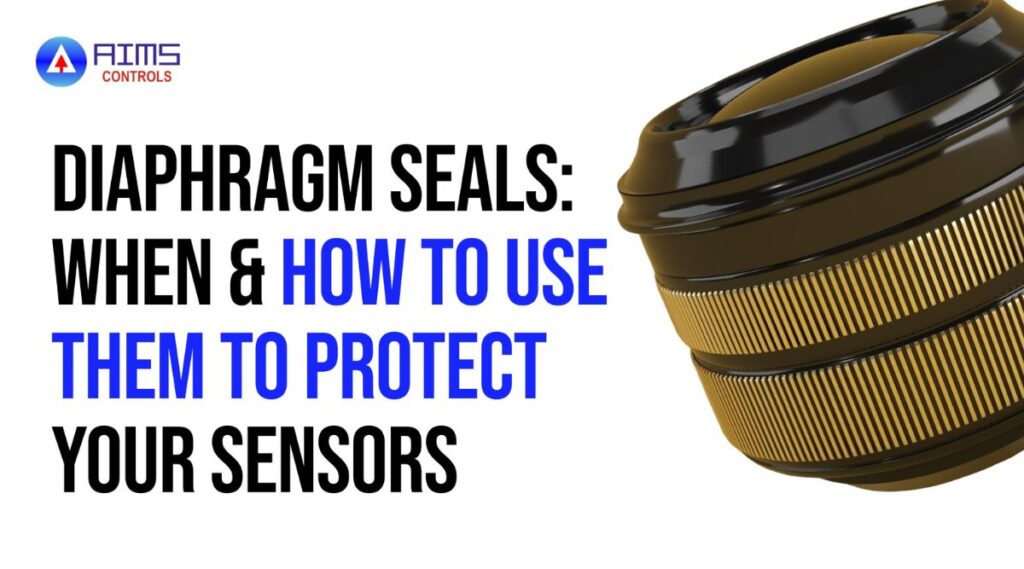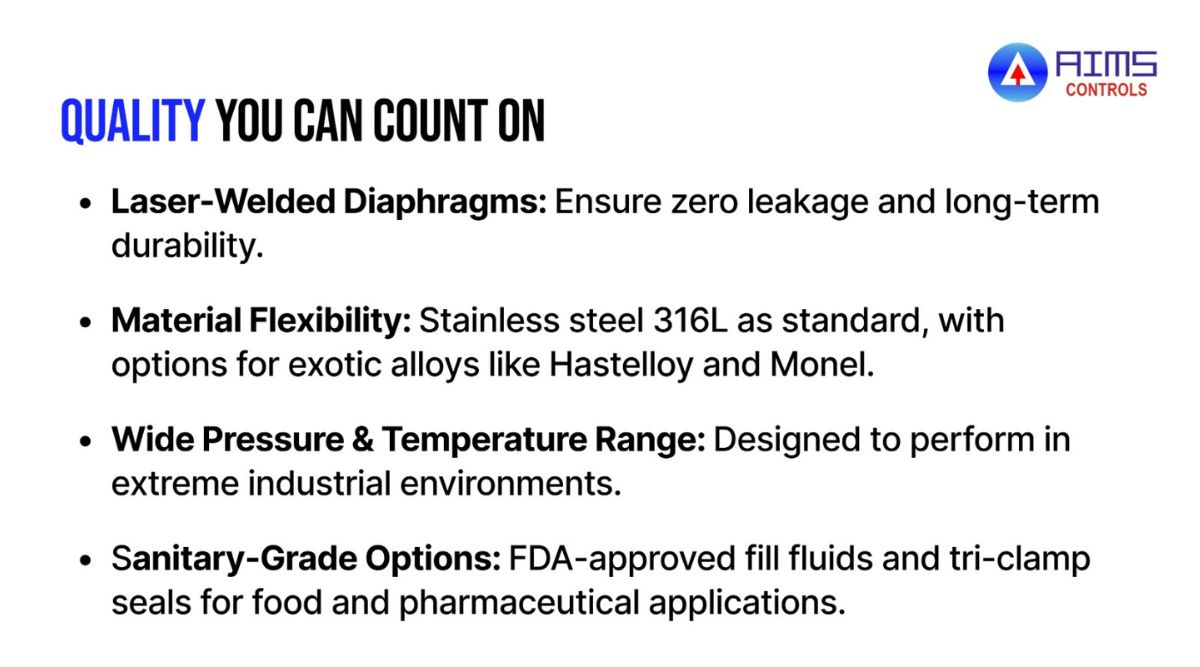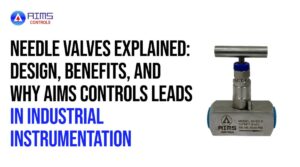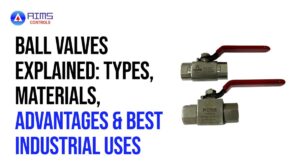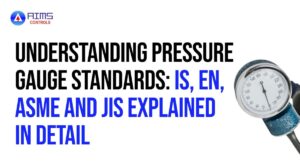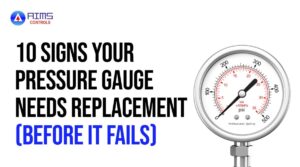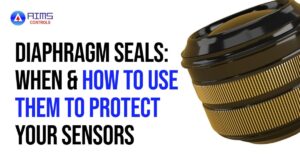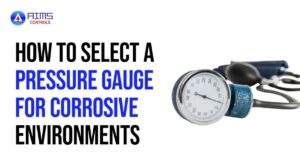In today’s industrial plants, pressure sensors and gauges are the silent workhorses—keeping boilers, pipelines, and production lines running safely. But what happens when those sensors are exposed directly to corrosive chemicals, sticky fluids, or extreme heat? They fail faster, deliver inaccurate readings, and create costly downtime.
That’s where diaphragm seals come in. A diaphragm seal acts as a protective barrier between the harsh process media and the sensitive sensor. By isolating the instrument with a thin metal diaphragm and fill fluid, it ensures your measurements stay accurate while your sensor stays protected.
At AIMS Controls, we design diaphragm seals that do more than just protect—they extend the life of your pressure instruments, reduce maintenance, and keep your plant running efficiently. Whether you’re dealing with corrosive acids, high-pressure steam, or sanitary applications in food and pharma, AIMS has a diaphragm seal solution tailored to your process.
What Is a Diaphragm Seal and How Does It Work?
A diaphragm seal is a protective device that sits between a process fluid and a pressure sensor. It consists of a thin, flexible metal diaphragm welded into a chamber and filled with a special liquid. When the process fluid applies pressure, the diaphragm flexes and transmits that pressure through the fill fluid to the sensor—without the fluid ever touching the instrument.
A diaphragm seal keeps the process media out, while still allowing the sensor to “feel” the pressure accurately.
Key Benefits at a Glance:
- Isolation: Keeps corrosive, viscous, or high-temperature fluids away from the sensor.
- Accuracy: Maintains reliable readings even in challenging conditions.
- Durability: Extends the service life of pressure gauges and transmitters.
Why Diaphragm Seals Are Critical for Sensor Protection
Pressure sensors are highly sensitive instruments. Exposing them directly to process media, especially corrosive, viscous, or high-temperature fluids, can cause premature failure, inaccurate readings, and costly downtime. A diaphragm seal acts like a shield, ensuring the sensor measures pressure without being damaged by the harsh realities of the process environment.
Key Ways Diaphragm Seals Protect Sensors:
Corrosion Resistance
- Diaphragm seals isolate the sensor from aggressive fluids like acids, alkalis, and chemicals.
- Built with corrosion-resistant materials (316L stainless steel, Hastelloy, Monel), they ensure long service life.
Temperature Protection
- With the right fill fluids and design, diaphragm seals can handle extreme cold and heat.
- They prevent thermal shock to sensors in applications like boilers, reactors, or steam lines.
Clogging & Fouling Prevention
- Flush-faced seals eliminate cavities where viscous or crystallizing media could build up.
- This keeps instruments clean and responsive, even with sticky or slurry-type fluids.
Sanitary & Hygienic Safety
- In food, beverage, and pharma industries, diaphragm seals prevent contamination.
- Tri-clamp or sanitary seals allow easy cleaning and compliance with hygiene standards.
When to Use a Diaphragm Seal (Industry Scenarios)
Not every process requires a diaphragm seal—but whenever your media poses a risk of damaging, clogging, or contaminating a sensor, a seal becomes essential. Think of it as an insurance policy that ensures uptime and accuracy.
Use a diaphragm seal whenever process media is corrosive, high-temperature, viscous, or sanitary-sensitive.
Common Industry Scenarios:
1. Corrosive Chemicals
- Plants handling acids, caustics, or aggressive solvents.
- Diaphragm seals with corrosion-resistant alloys (e.g., Hastelloy, Monel) keep sensors safe.
2. High-Temperature Steam & Oils
- Power generation, boilers, refineries.
- Seals with cooling elements or capillaries protect sensors from heat damage.
3. Viscous, Sticky, or Crystallizing Media
- Pulp, paper, sugar, or wastewater industries.
- Flush seals prevent buildup and clogging inside the instrument.
4. Sanitary Applications
- Food, dairy, and pharmaceutical production.
- Tri-clamp sanitary seals ensure hygienic, contamination-free measurement.
5. Slurries & Suspended Solids
- Mining, cement, or sludge handling.
- Heavy-duty or flush-mounted seals keep solids from entering the sensor cavity.
Pro Tip for Plant Operators: If your pressure gauge or transmitter needs frequent cleaning or replacement due to process media, that’s a strong sign you need a diaphragm seal.
“Unsure which diaphragm seal is right for your application? AIMS Controls’ experts can help you choose the perfect fit for your process.”
How to Choose the Right Diaphragm Seal
Selecting the correct diaphragm seal is about more than just fitting it to your sensor—it’s about matching the seal design to your process conditions, media properties, and installation needs. The right choice ensures accurate measurement, longer instrument life, and compliance with industry standards.
Choose a diaphragm seal based on connection type, process media, and mounting method.
1. By Connection Type
- Threaded Seals: Compact, economical, easy to install on gauges and transmitters.
- Flanged Seals: Ideal for pipelines and high-pressure applications where leak-tightness is critical.
- Sanitary (Tri-Clamp) Seals: Designed for quick disassembly and cleaning in food, beverage, and pharma industries.
2. By Process Media
- Corrosive Media: Use seals made from exotic alloys (Hastelloy, Monel, Tantalum) with compatible fill fluids.
- High-Temperature Fluids: Select seals with cooling elements, extended necks, or capillary connections.
- Viscous or Slurry Media: Go with flush diaphragm seals that prevent buildup and allow easy flushing.
- Sanitary Media: Choose smooth-surface sanitary seals with FDA-approved fill fluids.
3. By Mounting Method
- Direct-Mount Seals: Compact and reliable, best for applications where vibration is minimal.
- Remote-Mount (Capillary) Seals: Ideal for applications where sensors need to be kept away from high heat, vibration, or hard-to-reach areas.
- Specialty Designs: Saddle, inline, or extended-neck seals available for unique piping setups.
AIMS Controls Advantage:
AIMS offers a comprehensive range, from flush sanitary seals to high-pressure seals, all engineered with laser-welded diaphragms, exotic alloy options, and FDA-grade fill fluids. Whatever your process, AIMS has a diaphragm seal tailored to your exact needs.
“Explore AIMS Controls’ [Diaphragm Seal Product Range] or request a tailored recommendation from our technical team today.”
Why Choose AIMS Controls Diaphragm Seals?
When it comes to protecting your sensors, not all diaphragm seals are created equal. AIMS Controls has built a reputation for engineering seals that combine durability, precision, and adaptability to fit a wide range of industrial applications.
Here’s why plant operators and purchasing managers trust AIMS Controls:
Engineered for Every Application
From high-pressure environments to sanitary processes, AIMS offers a diaphragm seal for every need:
- Heavy-Duty Diaphragm Seal: Designed for rugged conditions, handling pressures up to 600 bar with robust welded construction.
- Threaded Flush Diaphragm Seal: Perfect for viscous or clogging media—its flush face prevents buildup, ensuring clean and reliable readings.
- Slip-Ring Coupled Diaphragm Seal: Ideal for remote mounting with capillaries, keeping instruments safe from heat and vibration.
- Direct-Coupled Diaphragm Seal: Compact, leak-tight, and easy to install—perfect for everyday industrial processes.
- I-Section Diaphragm Seal: Specialized design for hard-to-reach pipeline connections, offering secure and reliable measurement.
Quality You Can Count On
Lower Total Cost of Ownership
By preventing sensor failures, clogging, and corrosion, AIMS diaphragm seals help extend instrument life, reduce maintenance, and avoid costly downtime.
When you choose AIMS Controls, you’re not just buying a diaphragm seal—you’re investing in reliability, accuracy, and long-term savings.
[Explore All Diaphragm Seals] or [Contact AIMS Controls] to discuss the best seal for your process.
FAQs on Diaphragm Seals
1. What is a diaphragm seal used for?
A diaphragm seal is used to protect pressure sensors and gauges from corrosive, viscous, or high-temperature process media. It isolates the sensor with a thin diaphragm and fill fluid, ensuring accurate readings without direct media contact.
2. How does a diaphragm seal protect a sensor?
It works by placing a flexible diaphragm between the process media and the sensor. The diaphragm transmits pressure through a fill fluid to the sensor, preventing damage from corrosion, clogging, or extreme temperatures.
3. When should I install a diaphragm seal?
Install a diaphragm seal whenever your process involves aggressive chemicals, hot steam, sticky fluids, sanitary conditions, or slurries that could damage or foul a sensor.
4. What industries use diaphragm seals?
Diaphragm seals are widely used in chemical plants, oil & gas refineries, power generation, food & beverage, pharmaceuticals, water treatment, and pulp & paper industries.
5. What types of diaphragm seals does AIMS Controls offer?
AIMS Controls offers a full range, including:
- Heavy-Duty Seals for high-pressure services.
- Threaded Flush Seals for sticky or viscous media.
- Slip-Ring Coupled Seals for remote mounting.
- Direct-Coupled Seals for compact, direct installations.
- I-Section Seals for specialized pipeline connections.

